
Without a sound, we woke from our internal alarm to find the house reflecting its age with quiet. It’s only when moving into the parlor that the tick-tock of a clock becomes our companion to the emerging day. The place settings that were put out the night before identify where breakfast will be, but that’s still being concocted if Clayton and Deborah’s movements in their kitchen are indicators. Coffee is brought out with the promise of being strong in order to appeal to our European sensibility. We start to wipe away the remnants of sleep with this jolt of caffeine and the serenading of opera flowing from the kitchen and wait patiently; Caroline knits a sock, and I am writing.
Breakfast must be identified and accounted for as it is a labor of passion and investment of skills. Initially, we were informed that the cooking services were on hold for the duration of the virus, but it turns out that my rhapsody about the wizardry of tastes that enchanted our memories of a January visit was enough to have Deborah inquire of the man behind the frying pan if he’d be willing to grace us with a new ensemble of flavors to help us break the overnight fast. He agreed.

Aplomb cannot be the right choice of words as I do not believe Clayton finds his time in the culinary alchemist’s lab to be demanding. Our breakfast arrives, radiating the skills of the maestro. We are brought a small ramekin of fresh fruit, a carafe of juice, and a plate separated into threes, which could be a nod to the father, the son, and the holy ghost, or is it a reflection of academia where there is your opinion, my opinion, and someone else’s opinion? On second thought, maybe nothing at all was implied with our servings of veggie frittata, field roast sausage, and chia seed pancakes about to be topped with prickly pear agave syrup, but it’s nice to dream. As for the appeal of the palette? Gluttony would have me asking for seconds while manners dictate I simply gush over the exquisite meal.
Speaking of dreaming, it is time to temporarily leave this house to wander over to the Gila Cliff Dwellings and visit others’ faded dreams.
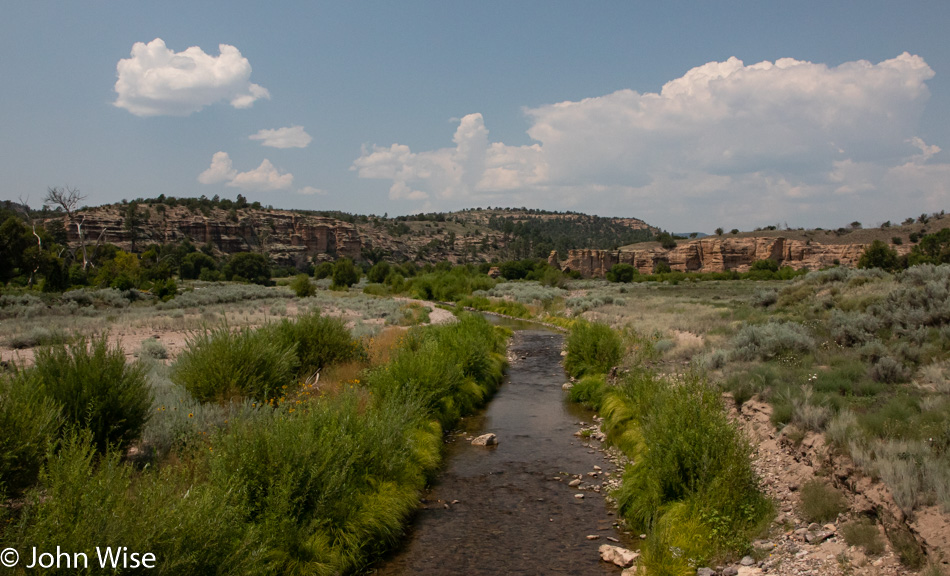
In the distance, long before we ever reach our destination, we start to see where normal used to be. Driving into an adjacent state reminds me of the freedom to roam. Our sense of place has an inherent need to take ourselves to the end of the road in order to look out and wonder what’s beyond the limits of what we can see and know. Our exercise in exploration offers us a footing to better understand what the toil at home is for. This journey over to Silver City, New Mexico, where we’ll connect to State Road 15 going north through Pinos Altos and up into the Gila National Forest area, where the cliff dwellings are, will literally deliver us to the end of the road.
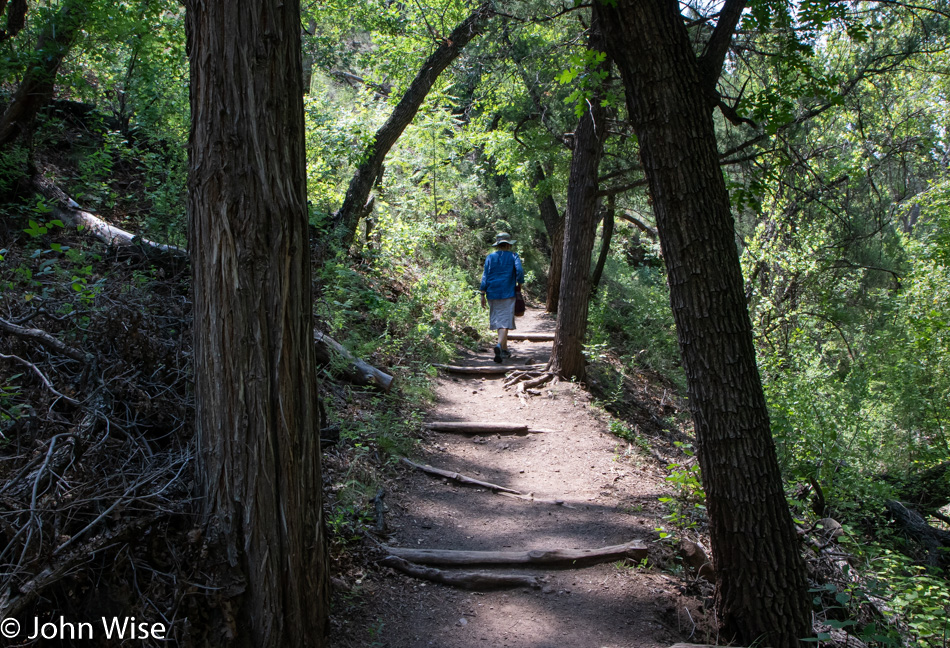
Nearly two hours of twisting, windy road in an air-conditioned car traveling between 25 and 45 mph allowed us to arrive in the middle of nowhere in comfort; we even had iced drinks in the backseat along with snacks for our visit by way of absolute luxury. The entire way, I thought about those who would have lived in the cliff dwelling we are visiting for the second time in our lives. How far did they venture away from home? Had any of them ever gone so far as to walk to the ocean? What was the totality of their universe? I’d wager that they likely did not have concepts for the need to escape on a weekend sojourn to change things up.
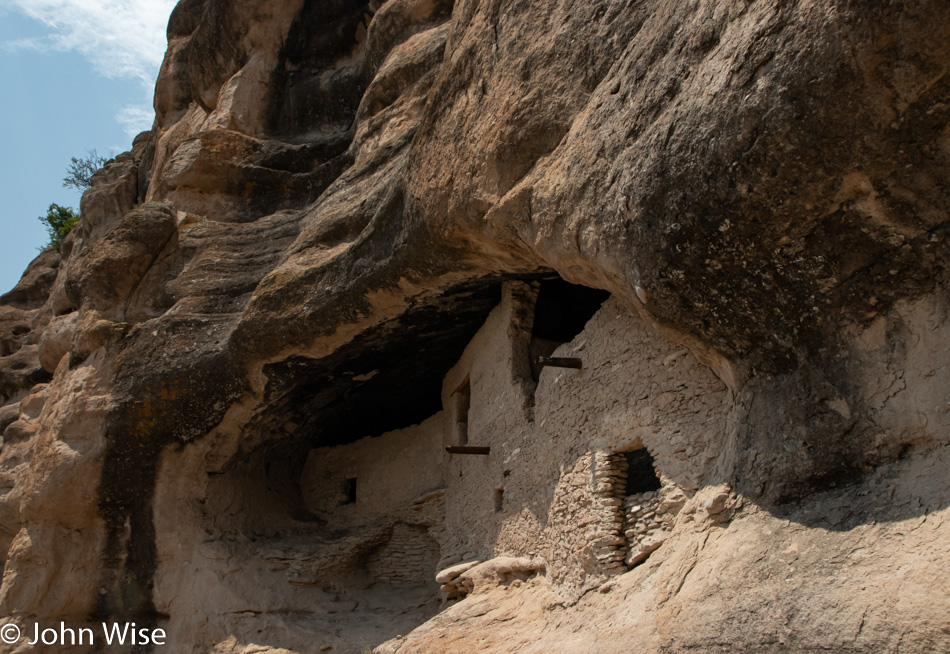
From the clues that remain in the area, researchers have surmised that people known as the Mimbres lived in this area, with the Gila River running through it, from about 1,000 to the year 1,250. Only 25 years later, the members of the Mogollon people took up residence on the cliffside, building a series of 46 stone rooms within five caves, but then abandoned the area a bit over 100 years later. We have little certainty about what was in the minds of indigenous peoples of North America since before we could learn of their customs and history, our ancestors tried to annihilate all references and appearances of what they might have contributed to our culture. Such was the weakness our forefathers felt about their own religion. Funny, not funny, how that holds true to this day.
While I stand upon lands they were forced to give us, I cannot stand in their footsteps. I watch the shadows of birds whose ancestors flew over the same adjacent canyons as their descendants. Lizards scurry about just as they would have when the Mogollon and Mimbres people walked amongst them; I can’t help but wonder if the lizards and birds don’t know more about the people of these lands than we ever will.
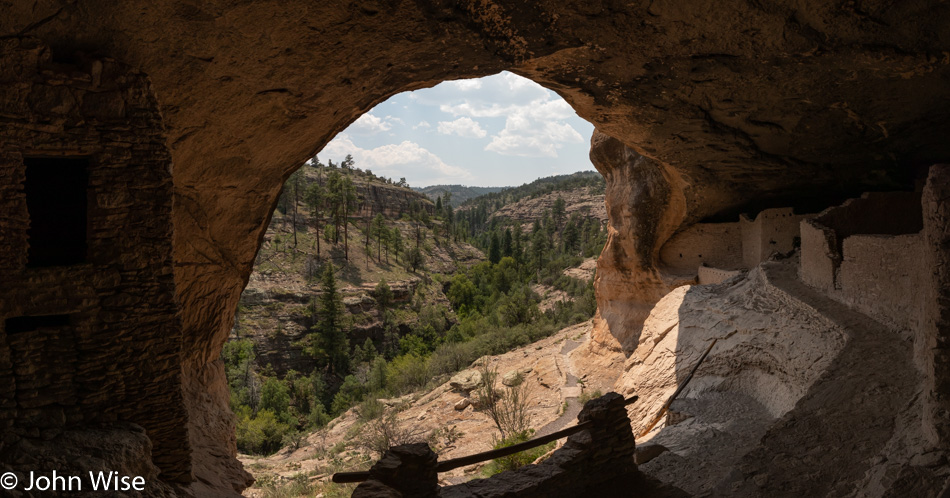
I’m jealous of the stones that knew the touch and felt the warmth radiating from the people and their hearths, taking refuge from the elements within these homes fashioned by ancient architects. I listen closely to the silence but cannot hear the echoes of knowledge of the band of humans brought to this corner of remoteness.
I don’t mean to infer there was ever anything in North America like a hub or city for the millions of indigenous people that strode among the trees, mountains, rivers, and animals over the centuries. The one thing I can surmise, though, is that while they likely knew hardship, they also knew how to occupy a quiet place upon the land, which has me questioning if they didn’t find a kind of enlightenment in the quiet of the mind when one soars effortlessly within one’s environment.
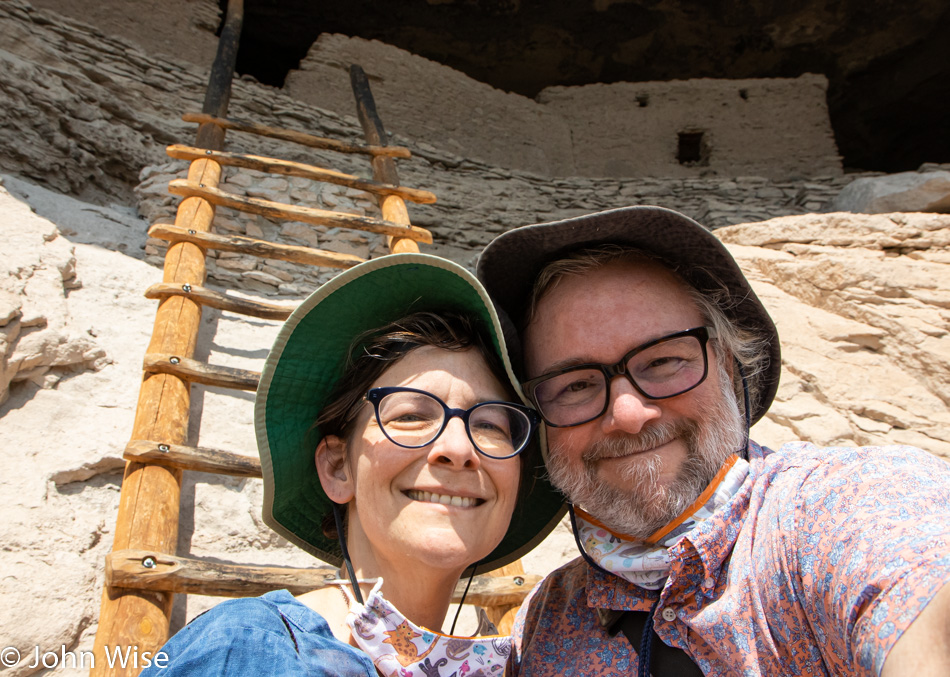
But this is all speculation and flights of fantasy, as my own mind is a hive of parasitic jingles and messages conditioned by consumption that were supposed to deliver me to happiness and success. I can have everything shipped home from Amazon, Walmart, musical instrument shops, all kinds of food, even marijuana, but I cannot have anyone bring me the vastness of being from a place that conveys the spectacle only nature can deliver to one’s eyes, ears, nose, and touch. For this reason, I will always be poor.

Had it been the Mimbres or the Mogollon living here, they did so without fee, without tax, without deed, and without anyone to answer to. All they needed to do was survive, and maybe that wasn’t all that easy as, within about 100 years, they abandoned their perch with a view. I don’t believe they all perished, but would like to think they moved on as circumstances had become difficult, which necessitated a relocation, and that their descendants are now in nearby communities. As a visitor to these lands, I’m allowed to take nothing besides my memories and photographs; I cannot even pick a wild grape that would have been free for the taking in the centuries before my ancestors arrived.

Caroline has continued in her effort to know something more about the place we’ve been visiting and on our arrival, she inquired about the local Junior Ranger program only to learn she could earn her Senior Ranger badge today. Needing to understand what could be gleaned from a visit to this National Monument, she ventured up the trail, trying to capture every clue from the details on display so that when the park ranger tested her knowledge, she might qualify for the honor of once again taking the oath to help protect what is held as important to our culture. With her right hand raised, socially distanced, and masked up, Caroline is now a Senior Ranger.

Our own time here was extraordinarily brief, and the timing was perfect, with beautiful skies on hand until they started to darken with the threat of storms on the horizon. We managed to visit another small dwelling and almost missed some incredible pictographs had my eye not caught a hint of them after we’d started to drive away. I reversed back to the Lower Scorpion campground and pulled into the parking lot again so we could take a different trail that delivered the reward of more than a dozen cliffside panel pieces with meanings lost in time or at least lost to the invading forces. We can admire the messaging from afar, but deciphering their intrinsic value is a guessing game that I cannot claim to know how to win.
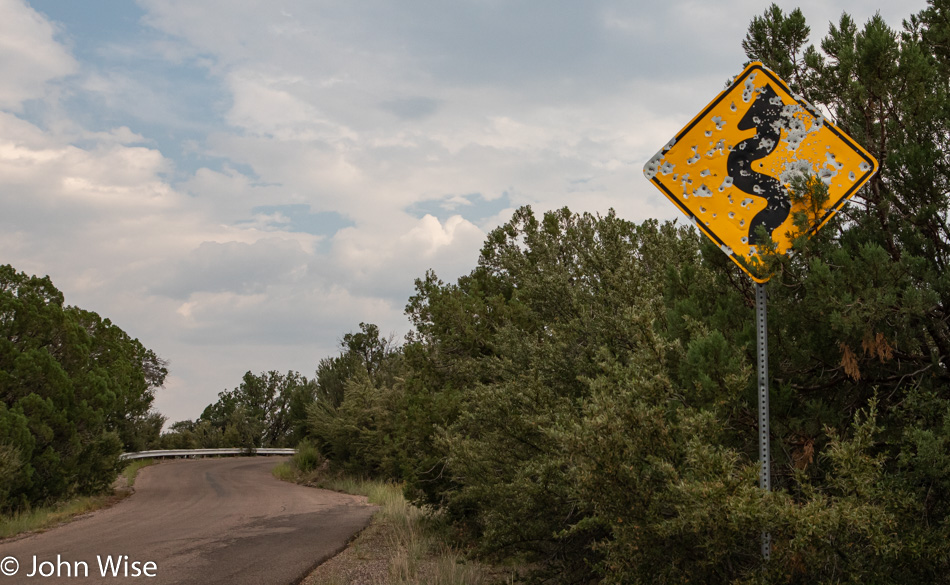
Our signs, on the other hand, are easy to parse, “This windy road pissed off others who passed this way which required them to leave their vehicle with a weapon and attempt to murder the sign.” We’ll pass through old town Pinos Altos on our way back through Silver City, where we’ll need to get dinner. This town is not very well equipped for serving people food on a Sunday. Most restaurants are closed. I can only guess that Silver City is not really on anyone’s map of places to go, and so with a depressed economy, the locals cannot support these businesses seven days a week. If there was a demand from tourists, I’m sure owners would have brought on staff.
Once we’d decided on where we’d pick up food, we started hearing a commotion outside of our windows; it was the buzz of cicadas sounding, unlike the ones we have in Phoenix. Their screams were like a sine wave of volume modulation that would wax and wane, and at the top of their crescendo, you wouldn’t be blamed if you were slightly frightened into thinking some kind of imminent explosion of their species was about to occur. I say, unlike their Arizona brethren, as the chirp is significantly different.
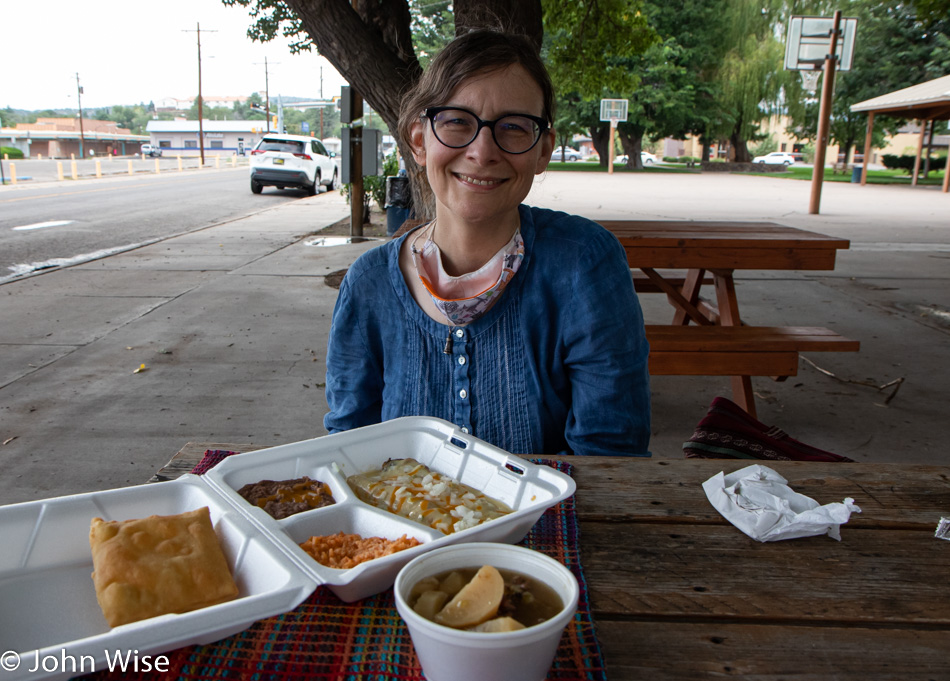
After our incredibly mediocre Mexican dinner, taken al fresco in a local park, we licked the wounds of having missed out on one of New Mexico’s famous green chili dishes, but there will be other visits to this part of the Southwest in the future. On the bright side, we are enjoying the idea of taking our food to go and finding a picnic table to have a private dinner in the great outdoors.
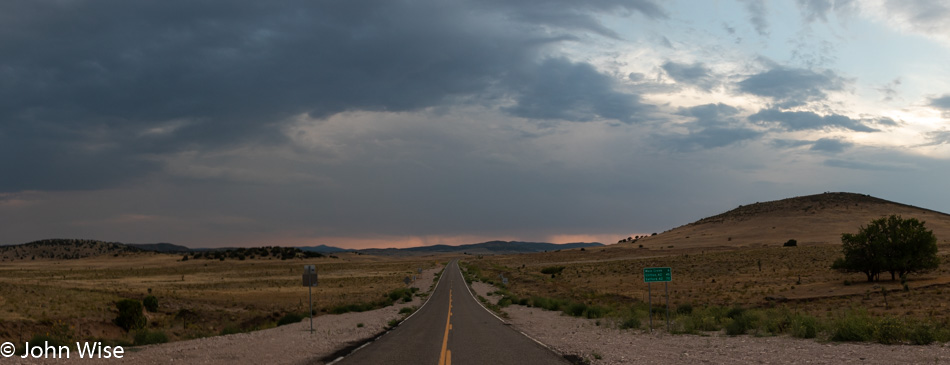
Our options to return to Duncan were to go back the way we’d come or take a longer route up north on a road we’d not traveled in years. Of course, we took the long way. Were we rewarded with some spectacular sunset for our efforts? Nope. But, there was one moment when a deep, beet-red sun peeked through a keyhole in the clouds and let us have a tiny glimpse of our star far out in the distance. We’d never seen such a phenomenon and sadly do not have photographic proof as the road we were on was not amenable to pulling over safely to indulge our sense of capturing an aesthetic we’d not experienced yet in all of our years. Such is the magic of the little moments that pass without documentation, images, icons, or words. It feels like the Mogollon people and so many other native peoples from these lands can only be seen as the fleeting image of something profound and beautiful glimpsed through the tiniest of keyholes.